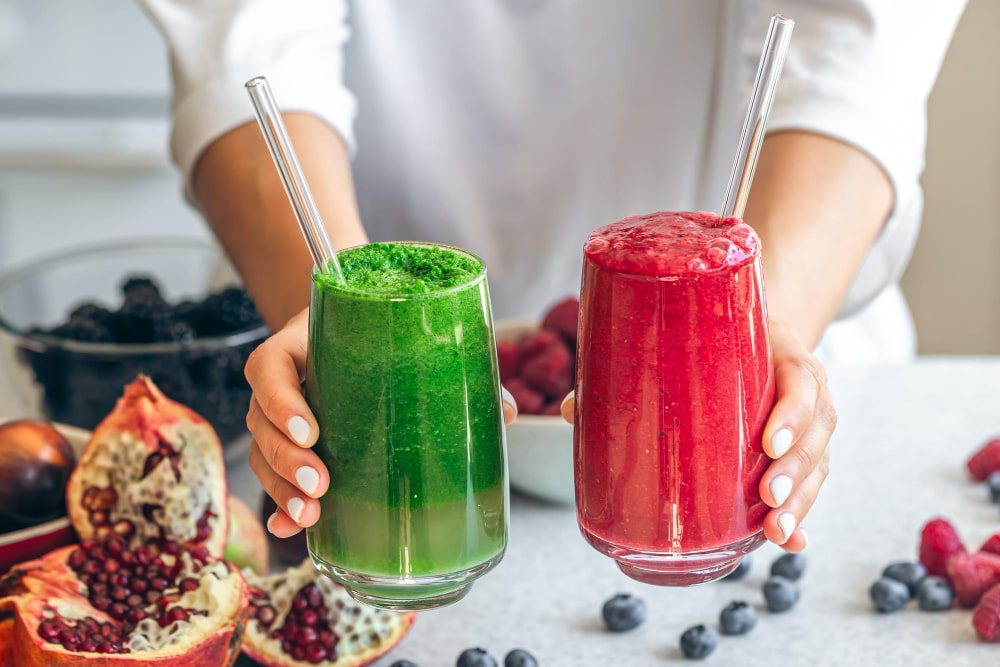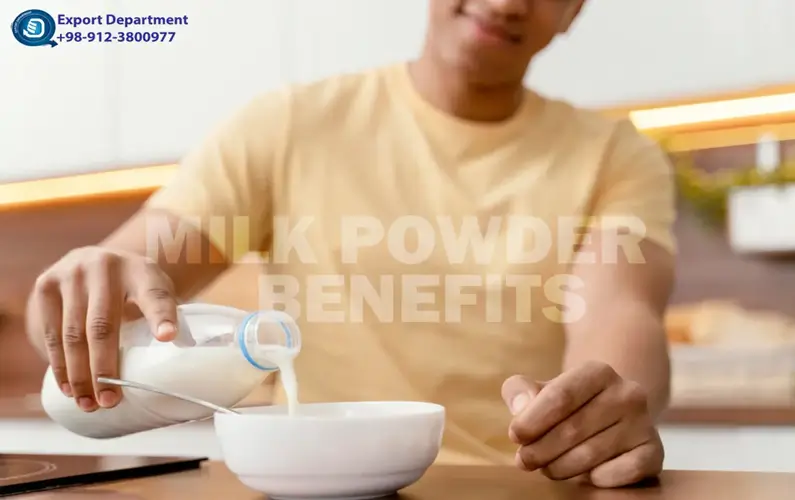Do You Know the Many Uses of Milk Powder in Your Pantry? 9 Uses Mentioned
This article offers an insightful exploration into milk powder, detailing its production process and versatility in various culinary and skincare applications. Furthermore, it provides nine innovative ways to incorporate powdered milk into recipes, ranging from enhancing beverages like coffee and tea to enriching baked goods and even exploring its use in skincare routines.
| Table of Contents |
| 1. What Exactly is Milk Powder? |
| 2. Exploring 9 culinary and facial uses of Powdered Milk |
| 3. Using milk powder in coffee and tea |
| 4. Milk powder for making smoothies and shakes |
| 5. Enhancing your bread and cakes with milk powder |
| 6. Best skim milk powder for ice cream |
| 7. Milk powder for baking cookies, sweets & chocolate |
| 8. Reconstituting milk from powdered milk |
| 9. Milk powder for sauces, soups and puddings |
| 10. Milk powder for making cheese |
| 11. Milk powder for skin care |
| 12. FAQ’s |
What Exactly is Milk Powder?
Milk powder, alternatively termed as dry milk, undergoes a process involving pasteurization followed by dehydration through evaporation to eliminate its water content, resulting in a powdered form. Renowned for its extended shelf life and versatility, milk powder serves as a convenient substitute for fresh milk. Its wide-ranging applications span across various culinary domains, encompassing bakery, confectionery, meat, main dishes, nutritional products, and beyond. Despite its powdered state, milk powder retains the nutritional integrity of fluid milk, offering a rich source of essential nutrients.
There are two primary classifications of milk powder, distinguished by varying levels of fat, protein, and water content.
Whole Milk Powder: Derived from homogenized milk, whole milk powder is produced through evaporation and spray drying processes. It contains over 26% fat content and less than 5% water content.
Skimmed Milk Powder / Non-fat Dry Milk Powder: Skimmed milk powder is obtained by pasteurizing whole milk, separating the cream to yield skimmed milk, and subsequently subjecting it to a drying process. It comprises 1.5% fat content and less than 5% water content.
Exploring 9 culinary and facial uses of Powdered Milk
Powdered milk stands as a versatile ingredient with numerous culinary applications. Renowned for its convenience, portability, nutritional richness, and extended shelf life, it's a staple in the culinary realm. Let's delve into nine innovative ways to utilize powdered milk:
1. Using milk powder in coffee and tea
Substitute powdered milk for regular milk in tea or coffee effortlessly.
If you prefer a very milky, creamy tea, simply mix the milk directly into the tea.
For a lighter touch of milk, start by mixing the milk with hot water before adding the tea.
In your cup, measure out your desired amount of milk powder. For a standard 8 oz/236 ml cup, aim for at least 2 heaping teaspoons of milk powder for an extra milky flavor.
To dial back the milkiness, use just one heaping teaspoon of milk powder in the empty cup, and then add a few teaspoons of hot water.
Stir until you achieve a paste-like consistency, gradually adding hot water until the milk powder has completely dissolved (approximately 2 oz/66 ml or less). Then, pour in your tea, stir, and savor.
When mixing the milk and tea, remember to pour the tea into the milk. This method ensures better blending, enhancing the overall taste of your tea.
.jpg)
2. Milk powder for making smoothies and shakes
Enhance smoothies and shakes with 1 to 2 tablespoons of non-fat dry milk powder per serving for added thickness and nutrition.

3. Enhancing your bread and cakes with milk powder
Utilize powdered milk in various bakery and confectionery items such as cakes, cookies, cupcakes, muffins, pancakes, and yeast bread. milk powder aids in the fermentation of bread.
High-heat nonfat milk powder undergoes processing at elevated temperatures, resulting in a higher denatured protein content. This process imbues the powder with a sweeter, slightly caramelized flavor profile. The increased sweetness and protein content contribute to enhanced rising properties, especially beneficial for enriched doughs like brioche. Additionally, it imparts a more tender crumb texture and extends the shelf life of bread products. Although high-heat milk powder may be less readily available, its profound impact on baking breads makes it well worth the effort to procure.
4. Best skim milk powder for ice cream
Low-heat nonfat milk powder undergoes processing at lower temperatures, resulting in a "fresher" milk flavor. This variant dissolves more readily and boasts a lower denatured protein content, making it particularly well-suited for beverages such as hot chocolate, ice creams, and various frozen desserts.
The addition of milk powder increases the milk solid content thus making the ice cream denser and smoother. If you toast milk powder low and slow in the oven, it ends up taking on a brown butter butterscotch flavor. You can use this amped-up ingredient in ice cream recipes, and you can also add a spoonful or two to milkshakes, hot coffee drinks, or even boxed pudding mixes.

5. Milk powder for baking cookies, sweets & chocolate
The increased protein content lends the cookies a chewy texture and contributes to the formation of a delightful crust. Whole milk powder is great for Indian sweets like gulab jamun, or you can even reconstitute it with water for cooking savory dishes. Create whipped toppings for pastries and pies by blending milk powder with ice-cold water until the desired thickness is achieved.
6. Reconstituting milk from powdered milk
Powdered milk is not just limited to cooking and baking; it can also serve as a convenient solution for making milk itself! If you seldom consume or use milk, powdered milk offers an affordable and shelf-stable alternative, sparing you from the risk of spoiled milk in your refrigerator. Additionally, when you only require a small quantity of milk for baking purposes, powdered milk proves to be an ideal solution.
For a refreshing glass of milk, a recommended ratio is one part milk powder to four parts water. To ensure optimal dissolution, use cold water and whisk or shake the mixture thoroughly until the milk powder is fully incorporated. This simple method allows you to enjoy the goodness of milk whenever you need it, with the added convenience and longevity provided by powdered milk.
7. Milk powder for sauces, soups and puddings
Elevate the nutritional value of everyday foods like gravies, sauces, soups, mashed potatoes, puddings, and custard by incorporating milk powder into each cup of water or broth.

8. Milk powder for making cheese
Prepare curd, ricotta, and cottage cheese using powdered milk. Low heat-treated whole milk powder works best, but it's not commonly found in supermarkets. Most commercial whole milk powders are high heat-treated, which damages proteins and affects curd formation. Based on trials, cheeses like feta, cream cheese, and ricotta work best with milk powder, with hard cheeses potentially successful as well, given feta's similarity.
9. Milk powder for skin care
Harness the skin-benefiting properties of milk powder, which contains lactic acid, by making a purifying face pack with milk powder and water. This treatment can help achieve healthy, smooth, and glowing skin.
FAQ’s
Can you use any type of powdered milk in tea?
Yes, you can use any powdered milk for milk tea. However, for the best flavor and texture, opt for slightly thicker milk powders. Avoid creamers, despite their delicious taste and often vegan nature. Creamers dissolve too quickly and don't contribute to the desired texture of milk powder tea.
Can I substitute milk for milk powder to make milk tea?
Yes, you can use milk instead of milk powder. In situations where you run out of milk or your milk spoils, milk powder tea is a convenient alternative.
However, if you're using liquid milk, remember to heat it first and then pour the tea into the milk.
What factors should be considered when selecting the right milk powder for a recipe?
Selecting the right milk powder for your recipe involves considering various factors such as solubility, cooking method, protein and fat content, pH balance, and flavor profile.
When aiming for creaminess, especially in delicate desserts like whipped cream or pastry cream, opt for non-fat (cow) or soy milk powder due to their superior solubility and texture. Solubility is particularly crucial for no-heat recipes, where smaller particles from spray-dried milk powders ensure a smoother consistency.
For heartier dishes like casseroles or pasta sauces, where flavor and fat content take precedence over solubility, both whole milk powder and cashew milk powder are excellent choices.
To achieve a tender pot pie crust or biscuit crumb, buttermilk powder is unparalleled. Its acidic pH and moisture-retaining properties enhance texture significantly. However, be mindful of its distinct flavor, which may not suit every recipe.
Additionally, buttermilk powder serves as a versatile substitute for cream of tartar in various recipes, with a recommended ratio of 1 tablespoon of buttermilk powder per teaspoon of cream of tartar.
Can you produce powdered milk at home?
Absolutely! Making your own powdered milk at home is feasible but requires time and patience. Here are three methods you can try:
Using a dehydrator:
Spread milk onto silicone dehydrator mats and set the machine to 135°F (57°C). Allow the milk to dehydrate for approximately 12 hours until it becomes crumbly and completely dry. Periodically mix and fold the milk to prevent clumping and ensure even drying. Once fully dehydrated, blend the dried milk to create a fine powder.
Using an oven:
Preheat your oven to its lowest setting, typically around 150°F (65°C). Ensure your oven is set to convection mode or keep the door slightly ajar to facilitate moisture evaporation. Spread the milk evenly on a baking tray and place it in the oven. Similar to the dehydrator method, stir the milk every few hours to promote even drying and prevent clumping. Once dried, blend the milk into a powder.
Can Cow's Milk Powder Be Lactose-Free?
While milk powder typically contains lactose, there are low-lactose variants available, catering to individuals with lactose intolerance. These specialized products are labeled as "lactose-free" on their packaging. However, it's important to note that all products derived from milk inherently contain lactose.
Is Powdered Milk Equivalent to Regular Milk?
No, powdered milk is a dehydrated form of milk, although it offers the same nutritional value as regular milk.
Does Milk Powder Contain Protein?
Yes, milk powder is a rich source of protein.
Is Milk Powder Free of Sugar?
No, milk powder naturally contains sugar, but it does not contain any additional sugar.
Read More: Analysis of Whey Protein Concentrate, Sweet Whey Powder, and Milk Protein Concentrate
To contact the Chaltafarm Dairy Export Department, please refer to the Contact Us section.
Ref:
[1] https://www.ruraltreasures.com/blogs/news/milk-powder-uses
[2] https://www.marthastewart.com/what-is-powdered-milk-7724741

.svg)



.webp)
